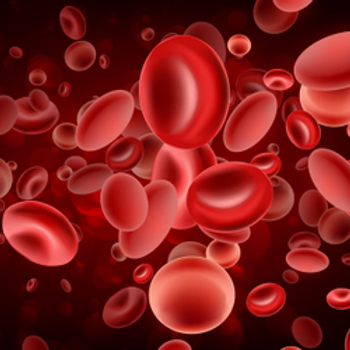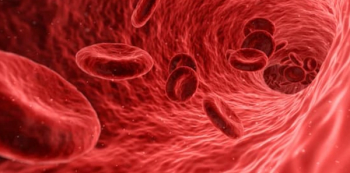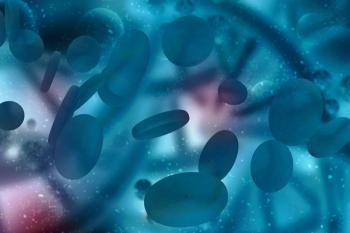
QOL/Continence Differences Remain Stable for TNT/CRT Groups in Rectal Cancer
A 6-year analysis of the phase 3 STELLAR trial did not find any significant differences between total neoadjuvant treatment and concurrent chemoradiation in rectal cancer.
No significant differences in quality of life or anal function were observed in patients with rectal cancer who received total neoadjuvant treatment and who received preoperative concurrent chemoradiation therapy (CRT), with stability maintained at 6 years, according to a 6-year analysis of the phase 3 STELLAR trial (NCT02533271) published in the International Journal of Radiation Oncology, Biology, and Physics.1
Based on the quality-of-life questionnaire, emotional functioning was 94.16 ± 10.19 points with neoadjuvant treatment vs 90.17 ± 14.63 points with CRT (P = .031), and severe diarrhea was 12.46 ± 21.73 points vs 6.74 ± 16.03 points, respectively (P = .036); these results were not clinically significant. No other items had statistical significance.
The total Wexner incontinence score was 5 points (IQR, 0-6) in the total neoadjuvant treatment group compared with 3 points (IQR, 0-6) in the CRT group; this was not statistically significant (P = .357). Normal anal function was observed in 34.3% and 42.0% of patients, respectively, mild fecal incontinence in 49.3% and 46.0%, moderate fecal incontinence in 14.9% and 10.0%, and severe fecal continence in 1.5% and 2.0%; there was no statistical difference between the groups (P = .778).
Based on follow-up time, patients were divided into 4 groups: 5 years (total neoadjuvant treatment group vs CRT group, n = 13:14 patients), 6 years (n = 43:32 patients, respectively), 7 years (n = 28:27 patients), and 8 years (n = 23:16). Overall quality of life and function assessments from the EORTC QLQ-C30 all varied but showed differences of less than 10 points, thus investigators noted there was small or no clinical significance. The median Wexner fecal incontinence score was 0 points at 5 years and 5 points at 6, 7, and 8 years (P = .008); there were no significant differences in Wexner fecal incontinence scores at 6, 7, and 8 years (P = .620).
Additionally, compared with the general population of data of people who completed the EORTC QLQ-C30 assessment, patients in the total neoadjuvant treatment group had a mean severe diarrhea score of 12.46 points vs the general mean score of 9.5 points, and the CRT group had a mean financial difficulties score of 11.99 points vs the general mean score of 10.6 points. The investigators noted these differences were not significant.
“The results showed that [total neoadjuvant treatment] achieved a greater complete response rate,2 whereas the patients’ quality of life and anal function were not significantly different from those of patients receiving the CRT treatment regimen,” wrote lead study author Jing Jin, MD, of State Key Laboratory of Molecular Oncology and Department of Radiation Oncology, National Cancer Center/National Clinical Research Center for Cancer/Cancer Hospital, Chinese Academy of Medical Sciences and Peking Union Medical College in Beijing, China, in the paper.1 “By 6 years of follow-up, quality of life and anal function of patients maintain stability, supporting the choice of the [total neoadjuvant treatment] treatment regimen.”
The STELLAR trial enrolled a total of 599 patients, 302 of whom were in the total neoadjuvant treatment group and 297 of whom were in the CRT group. At a median follow-up of 77.38 months (range, 59.07-103.20), a survey questionnaire was sent to all 414 surviving patients; 196 patients (47.3%) completed and returned the survey questionnaire, 107 (49.5%) of whom were in the total neoadjuvant treatment group and 89 (44.9%) were in the CRT group.
Eligible patients had distal or middle-third clinical primary tumor stage 3 to 4 and/or regional lymph node-positive rectal cancer. In the trial, patients in the total neoadjuvant treatment group received short-term radiotherapy consisting of 25 Gy in 5 fractions of 1 week and then 4 cycles of CAPOX chemotherapy; in the CRT group, patients received standard CRT of 50 Gy in 25 fractions over 5 weeks concurrently with 825 mg/m2 of oral capecitabine (Xeloda) twice a day.
The survey collected information through phone inquiries or questionnaire links sent via SMS; the utilized tools were the EORTC QLQ-C30, the EORTC QLQ-CR29, and the Wexner fecal incontinence score.
References
- Ma H, Li H, Xu T, et al. Quality of life and functional outcomes in patients with locally advanced rectal cancer receiving total neoadjuvant therapy versus concurrent chemoradiation therapy: an analysis of the STELLAR trial. Int J Radiat Oncol Biol Phys. 2025;122(1):43-51. doi:10.1016/j.ijrobp.2024.12.035
- Jin J, Tang Y, Hu C, et al. Multicenter, randomized, phase III trial of short-term radiotherapy plus chemotherapy versus long-term chemoradiotherapy in locally advanced rectal cancer (STELLAR). J Clin Oncol. 2022;40(15):1681-1692. doi:10.1200/JCO.21.01667
Newsletter
Stay up to date on recent advances in the multidisciplinary approach to cancer.

















































































